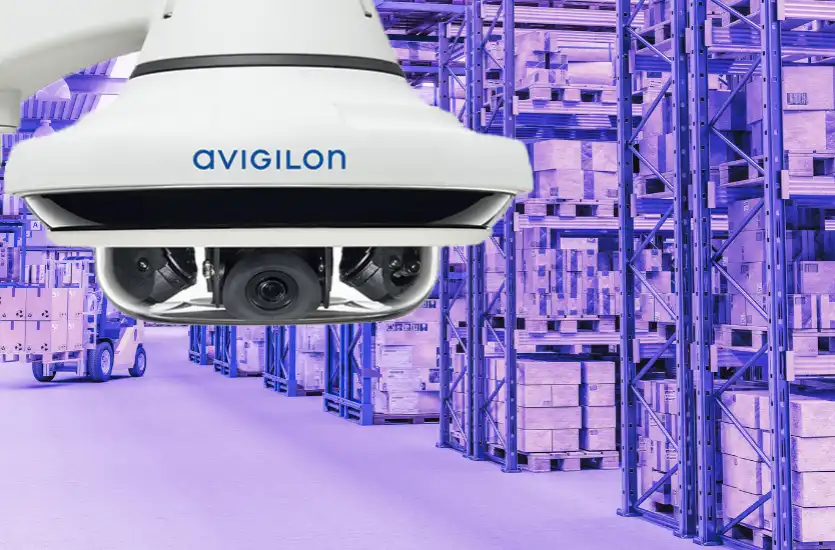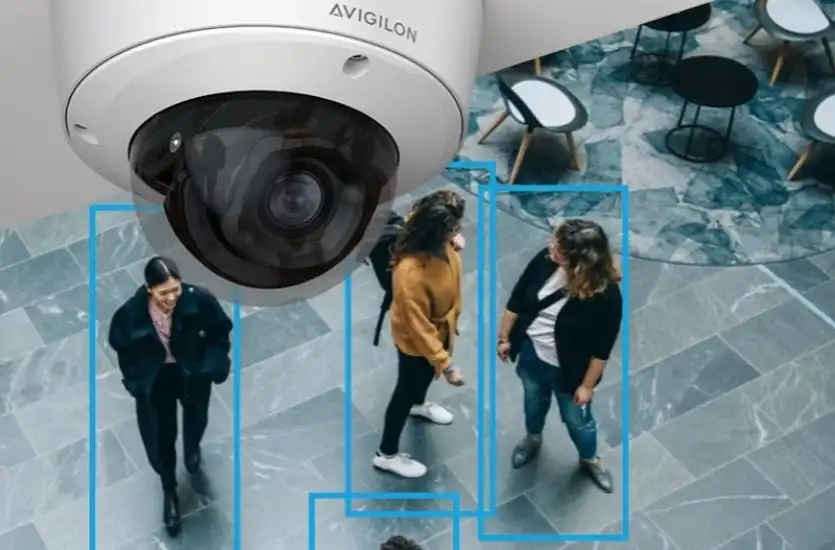When the sun goes down, keeping an eye on things gets a lot harder. Whether you’re protecting a business, school, utility site, or public area, visibility drops—and so does your ability to catch what’s happening in real time. This can be quite costly if your business has been experiencing vandalism or theft.
But unfortunately, regular cameras don’t always cut it in the dark, leaving gaps in your security setup. That’s where infrared (IR) and low-light technology can help. These tools help you see more clearly at night without relying on bright lights or blurry footage.
In this article, we’ll discuss how both technologies work, what makes them different, and how they can help you monitor your space more confidently after hours.
What Happens to Cameras at Night?
If you’ve ever tried to take a photo with your phone at night, you know how frustrating it can be. The image comes out too dark, or the details are lost in a haze of glare from nearby lights. Security cameras face the same problem. Once the sun sets, the quality of traditional surveillance often takes a nosedive.
Traditional lighting can help, but it’s far from a perfect solution. For one, bright lights can create an intense glare that makes it harder to see what’s happening. Secondly, there are often gaps—areas that lights simply don’t reach, leaving blind spots. And of course, continuously running high-powered lights can add significantly to energy costs. In short, these limits make traditional lighting far from ideal for round-the-clock monitoring.
That’s why security teams turn to technologies that can “see” in the dark. Without proper visibility, intruders can slip by unnoticed, important incidents go undocumented, and response times slow down. Having cameras that can handle low-light conditions means fewer blind spots, more accurate footage, and ultimately better peace of mind when it matters most—after hours.
Understanding Infrared (IR) Technology
Infrared (IR) technology might sound like something out of a sci-fi movie—and honestly, it kind of is. If you’ve ever watched action films like Predator or The Dark Knight, you’ve seen infrared in action. Characters use special gear to spot heat signatures in the dark, making it possible to track someone even when there’s no visible light. IR security cameras work in a similar way.
IR cameras detect infrared radiation (aka heat) instead of relying on visible light. This allows them to capture images in total darkness.
Thermal IR vs. Near-Infrared
- Thermal IR: Detects heat and creates images based on temperature differences—great for spotting people or animals in total darkness.
Near-Infrared: Uses infrared light that reflects off objects to form detailed images—better for identifying faces, license plates, etc.
How IR Helps Cameras See at Night
- Doesn’t rely on streetlights or outdoor lighting
- Works in pitch-black conditions
- Often includes built-in IR LEDs to brighten the area invisibly
Pros of IR Cameras
- Work in complete darkness
- Detect heat signatures
- Lower energy use than floodlights
Cons of IR Cameras
- Black-and-white images
- May struggle in fog or heavy rain
- Can be more expensive upfront
The global IR camera market hit $8.33 billion in 2024 and could top $15.68 billion by 2034. That growth shows just how many businesses are betting on better night vision.

What is Low-Light Technology?
Low-light technology—sometimes called “night vision”—isn’t quite the same as infrared, but it solves the same problem: helping cameras see in the dark. The big difference? Low-light cameras don’t rely on heat or infrared light. Instead, they’re built to work with very small amounts of visible light—like moonlight, streetlights, or even the glow from a nearby sign.
These cameras use highly sensitive image sensors and special lenses that can capture more light than a typical camera. One popular option is the starlight sensor, which gets its name from its ability to produce clear images with just starlight as a light source. The result is color footage, even in darker conditions, which can be really helpful for identifying details like clothing, faces, or vehicle colors.
Some low-light cameras also use wide-aperture lenses or built-in noise-reduction features to sharpen images that would otherwise be too dark or grainy to use.
How low-light differs from IR:
- Low-light needs some visible light to work, while IR can function in complete darkness.
- Low-light gives you color footage, while IR usually records in black and white.
- IR is better for pitch-black settings, like indoor warehouses with no windows, while low-light shines in outdoor areas with minimal ambient light.
Both have their place depending on the setting.
Comparing IR and Low-Light Technology
Now that we understand how both of these technologies work, let’s compare and discuss when to use one versus the other. Both are helpful for nighttime surveillance, but they work differently and serve different needs.
Use IR cameras when:
- You’re dealing with complete darkness (no lights at all)
- You need to detect movement or heat signatures, like people or animals
- You’re monitoring enclosed or indoor spaces like warehouses, storage units, or dark alleyways
Use low-light cameras when:
- There’s at least some ambient light—like from streetlights, signs, or the moon
- You want color footage at night for better detail
- You’re watching open areas like parking lots, parks, or public streets
| Feature | IR Cameras | Low-Light Cameras |
| Light Needed | None | Minimal visible light |
| Image Type | Back and white | Full color (if light allows) |
| Range | Shorter (depending on IR LEDs) | Often longer |
| Power Usage | Typically lower | Can vary by model |
| Best For | Total darkness | Low-light outdoor settings |
Common industries:
- IR: Warehousing, utilities, law enforcement, perimeter security
- Low-light: Traffic monitoring, city surveillance, retail parking areas
Choosing the right tech depends on the location, lighting conditions, and the kind of detail you need from your footage.
Benefits of Using IR and Low-Light in Night Surveillance
In 2023, there were an estimated 42,508 burglaries reported in commercial or office buildings across the U.S. Restaurants saw another 23,358 break-ins, and even military bases weren’t immune, with 45 burglaries reported. Most of these incidents didn’t happen in broad daylight—they happened late at night, typically between 10 PM and 3 AM, when fewer people are around and visibility drops.
That’s exactly why businesses and property owners are turning to night surveillance technology. When regular cameras can’t keep up, infrared (IR) and low-light cameras step in to help cover those vulnerable hours.
Here are a few ways they make a difference:
- Longer watch hours without the need for bright floodlights: This saves energy and avoids drawing unwanted attention to your security system.
- Clearer visuals in tricky lighting conditions: Whether it’s a dimly lit alley or a shadowy hallway, you’ll get better footage.
- Helps detect motion, intruders, wildlife, or unusual activity: These cameras are more responsive in the dark, giving you quicker awareness when something’s not right.
- Adds another layer of protection for properties: A well-lit camera system alone isn’t always enough. IR and low-light tech fill in the gaps that regular systems miss.
Night surveillance isn’t just nice to have—it’s necessary.
Things to Keep in Mind When Choosing Night Surveillance Cameras
As we shared above, security cameras are a must these days to protect your business—and if you’re going to invest in night surveillance, you want to make the right call. Whether you’re securing a restaurant, office, warehouse, or outdoor lot, choosing the right camera setup matters. Here are a few things to keep in mind when selecting a camera system for your business in central or southern Florida:
- What kind of location is being monitored? A wide-open parking lot has different needs than a small indoor office or a dark hallway.
- Indoor vs. outdoor use: Outdoor cameras should be weather-resistant and built to handle heat, humidity, and storms—especially in Florida.
- Budget, lighting conditions, and weather factors: Don’t just focus on price. Think about the lighting you already have, the coverage you need, and how the camera will hold up over time.
- Why talk to a pro before buying? A security specialist can help you find the right mix of infrared or low-light cameras for your space. You’ll avoid overspending—and you won’t end up with the wrong gear.
The right setup will help you keep an eye on things day and night—without missing a beat.
How EMCI Wireless Supports Night Surveillance
At EMCI Wireless, we help businesses and organizations take control of their security—day and night. We offer a full range of surveillance solutions designed to support everything from small offices to large-scale operations. Whether you need cameras for indoor spaces, outdoor lots, or wide-area perimeter security, we’ve got the tools and experience to help.
Our team doesn’t just hand you a box of equipment and wish you luck. We work with you to choose the right cameras for your setting, help with placement, and take care of setup and system integration. We’ll make sure your cameras work well with your existing network, two-way radios, or dispatch tools—so everything runs together smoothly.
EMCI Wireless works with public safety agencies, utility providers, schools, and private businesses throughout Florida from Pensacola to Miami. From tight warehouse corners to open-air event spaces, we know how to build smart, custom surveillance setups that help you stay aware and stay in control—even when crime is most prevalent.
Keep Your Property Protected—Even After Dark
Infrared and low-light technologies are changing the way businesses handle nighttime surveillance. Whether you need clear visuals in pitch-black settings or color footage in low-light areas, choosing the right setup makes all the difference. Every space is different, and the right solution depends on your specific needs. If you’re ready to improve your night coverage, reach out to EMCI Wireless. Our team is here to help you build a smarter, safer surveillance system.

